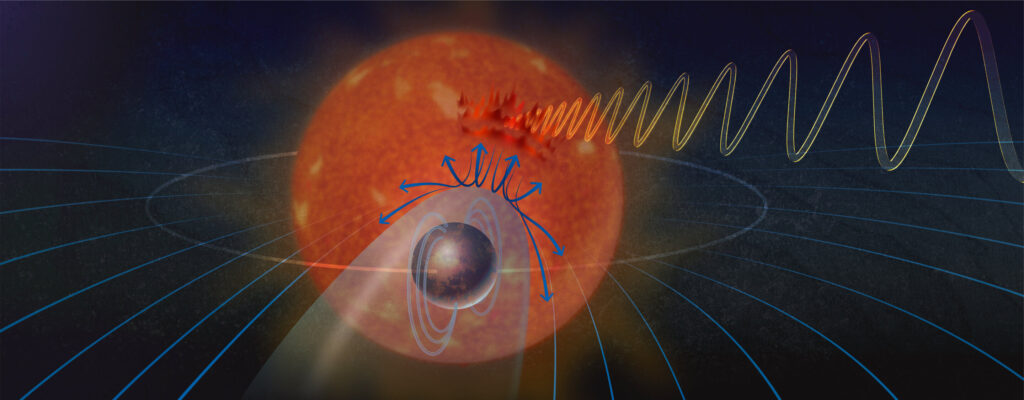An international team of astronomers has reported the discovery of traces of a magnetic field near the rocky exoplanet YZ Ceti b. It orbits a red dwarf located 12 light-years from the Sun.
Role of the magnetic field
Global magnetic fields are not available for all the rocky planets of the Solar System. So, our Earth and Mercury have them. At the same time, Venus does not have its own magnetic field, and Mars lost its own several billion years ago.

Many scientists believe that the presence of a stable magnetic field on Earth is one of the key factors that have provided the conditions for the emergence and development of life on it. In this regard, the question of the existence of magnetospheres in rocky exoplanets is of particular interest. They play a particularly important role for worlds in red dwarf systems. Such stars are much more active than the Sun and often produce very powerful flashes. It is believed that without its own magnetosphere, the red dwarf will quickly “blow away” the atmosphere from all exoplanets close to it, which will make it impossible for life to appear there.
Auroras on the red dwarf
During the observations of the YZ Ceti system made with the help of the VLA radio telescope complex, the researchers found strange repetitive radio signals. During the subsequent analysis of the data, they come to the conclusion that their source is the magnetic field of the exoplanet closest to the star, which makes one orbit around it in three days. Its mass is approximately 70% of the Earth’s mass.

According to the researchers, the radio waves recorded by them arise as a result of the following process. The exoplanet’s magnetosphere pushes the electrically charged plasma back towards the star. It then interacts with the star’s magnetic field, emitting bright bursts of energy. In fact, the radio waves that astronomers have observed are the aurora borealis on the star itself. If YZ Ceti b has its own atmosphere, then auroras are also formed on it.
At the same time, astronomers admit that the radio waves recorded by them may have some other mechanism of origin. But, they still consider the version with a magnetic field the most likely explanation.
In conclusion, it is worth noting that YZ Ceti is hardly a habitable planet. The temperature on its surface is too high to be comfortable for life. Nevertheless, the fact that such a small and close to the star world has its own magnetosphere is a good sign for astronomers engaged in the search for life in red dwarf systems.
According to https://phys.org
Follow us on Twitter to get the most interesting space news in time
https://twitter.com/ust_magazine

